Table of Contents Show
What do you do when your love of travel competes with your love of great smoking? Can you travel and camp and still enjoy your favorite barbecue? Do portable smokers even exist, and if so, do any of them make great barbecue?
Yes, yes, and more yes. We’re going to tell you about some smoker options and which we think is the best RV portable smoker. So you can travel and smoke delicious meals too.
Differences Between Grilling, Smoking, and Barbecuing
Before we can tell you which is the best portable RV smoker, we should cover some of the basics. It isn’t apparent, but grilling, smoking, and barbecuing are not at all the same things.
Grilling
Nearly everyone has a decent grill. You might even call it a BBQ, and that’s just fine. Most of us started out grilling, and many have never branched out beyond the grill. There’s nothing wrong with that, and grilling is the right way to cook many types of meat. If you have a decent steak, the traditional way to cook it is to throw it on a hot grill for a few minutes per side until you hit your favorite doneness. The same goes for burgers, dogs, brats, and more. Whether you have a gas grill or charcoal, the same idea applies. Grill the meat evenly on both sides until it’s safe, done, and delicious. The goal is to cook it through to the point you like it and have an excellent even char and seasonings on the outside.
Smoking
While smoking and barbecuing are similar, they aren’t the same. There can even be a crossover with smoking and grilling, where you add a smoke source like a wood chip pan or a smoke tube.
The variety of techniques and cookers is comprehensive, with electric smokers where an electric element heats a pan of chips to create heat and smoke, “stick burners” where you use larger wood pieces and manually maintain the fire level and temperature, and pellet smokers that use small food-grade wood pellets to create a very controlled temperature and level of smoke.
There’s also a technique called “cold smoking,” where you build a lot of smoke without creating a heat source. Cold smoking is excellent for things like cheeses or nuts where the food isn’t “raw.” Cold smoking meats like pork bellies to make bacon or cured smoked sausage require special curing salts that contain sodium nitrite to prevent bacterial spoilage. Cold smoking meats can be tricky or even deadly if done incorrectly, so don’t try this without proper research and ingredients.
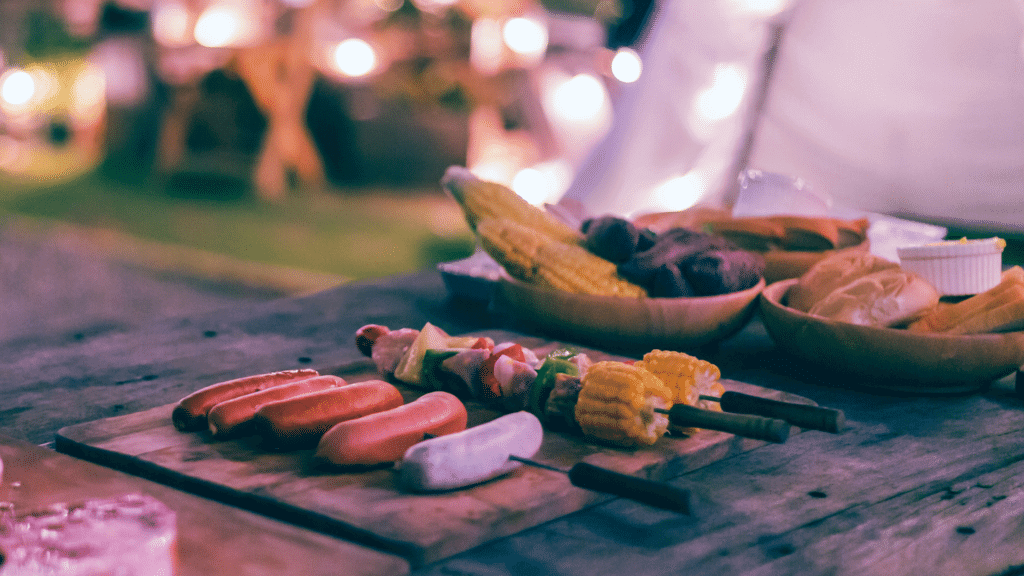
Barbecue
Real barbecue is a category on its own. Barbecue typically starts with cheaper, tougher cuts of meats cooked “low and slow” to break down the undesirable fibers and connective tissues, like beef briskets and pork shoulders (also called pork butts), and of course ribs. The brisket comes from the muscular chest area of the cow used for kneeling and standing up. These muscles need to be cooked at low temperatures (225° to 250°) for long hours to soften up to become a delicious barbecue. It’s the same beef cut and the same concept as slow cooking corned beef in a crockpot.
Similarly, a pork butt is cooked low and slow to break down the muscles, fats, and connective tissues; otherwise, it’s too tough and bitter. As these tissues heat up and break down, they create an internal condensation (like sweat) that slows down the cooking for an extended period called “the stall”. This is where the meat’s internal temperature stalls at the same level, sometimes for hours before it continues to rise. Briskets and butts are cooked to high temperatures (205°) to ensure their tender doneness.
Other meats like chickens and sausage are cooked in the smoker to get the same barbecue taste, but they don’t take as long. You can cut the chicken open to cook it flat like El Pollo Loco using the “spatchcock” technique. It cooks much faster and more evenly than a whole uncut chicken. The combination of good meats, great seasonings, and your cooking technique is what makes a great barbecue.
Can Pellet Grills Smoke and BBQ Food Too?
Electric smokers just aren’t very good, and stick burners take up a lot of room and require a lot of wood for the fire, making them challenging for travel. Pellet grill smokers are gaining in popularity because they make it so much easier to control the temperatures, plus the wood pellet fuel is so much more compact and easier to store in your RV. The easy temperature control also makes them so much more versatile because they smoke so well at lower temps and sear and grill like a champ at high temps.
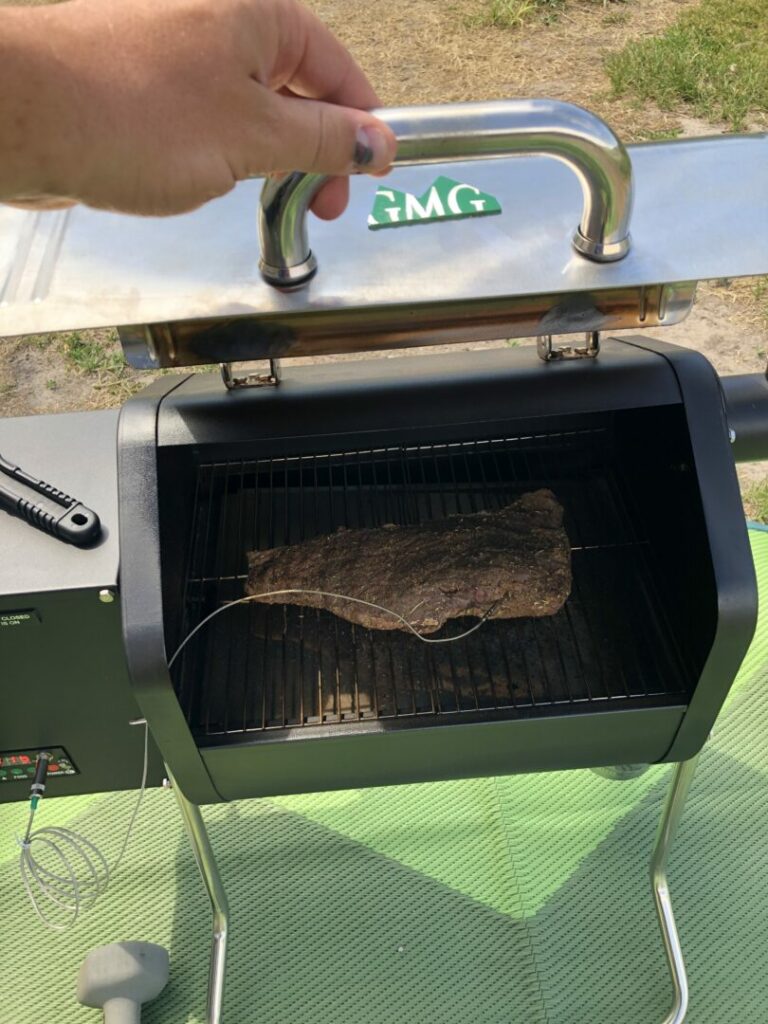
For safety reasons, the smoke settings cook in the 150° to 180° range. Smoking any less than 150° keeps the meat in the “danger zone” where bacteria thrive.
A good technique is to put your meat on at the smoke setting for an hour or two and then turn up the fire to finish cooking. Pellet smokers will produce great smoke at these lower temps up to 250°. Higher than 250° enters the cooking range with less smoke. You can sear the meats or even bake pizza in the 400° to 550° range.
This is a fantastic range of versatility from one cooking device. And it’s even more incredible to think that you can take it with you on the road. Imagine the jealousy from other campers when they see you cooking great racks of ribs in your campsite.
The possibilities are limited by your imagination, but there are also great resources for recipes available online. The two marketplace leaders, Traeger Grills and Green Mountain Grills offer amazing recipes on their websites and apps.
Put bluntly, pellet smokers are possibly the most incredible cooking innovation next to fire itself. And the fact that you can take one with you camping means that we are truly living in remarkable times.
What Are the Best Portable Smokers and Wood Pellets?
So what are the best portable RV smokers, and what pellets should you use?
The Green Mountain Grills (GMG) company takes a relatively simple approach to their product line with three grill sizes. The Davy Crocket portable grill is their smallest, and it’s built for easy transport. GMG also offers the medium-sized Daniel Boone and the big daddy Jim Bowie. Due to the size of these smokers, neither are practical to travel with. Exuding the most character is the towable GMG “Big Pig Trailer Rig”. Yes, it has a trailer tongue and is built to be pulled behind your vehicle. They also feature their Choice, Prime, and Prime Plus trim levels, depending on how fancy you want your grill.
Traeger takes a different approach. Their product line is vast, and the selection is overwhelming. However, their products are outstanding.
Between these two top brands, there are three great portable grills to choose between.
Best RV Portable Smoker: Green Mountain Grills Davy Crockett/Trek
The Trek/Davy Crockett isn’t just a great RV portable smoker; it’s a fantastic smoker compared to most larger smokers. This smoker has a decent-sized grilling area, large enough for two chickens, a brisket, or two large racks of ribs. What makes this grill truly outstanding is the quality of the GMG controller.
Their 12v controller can plug into a 110 outlet or a 12v cigarette-style outlet and uses surprisingly little power for a BBQ. The Davy Crockett has a built-in temperature probe with alerts for internal temperature. You can also dial in the cooking temps to the individual degree, compared to Traeger’s 25 or 5-degree ranges.
Best of all, the controller is WiFi-enabled and connects to the companion mobile app directly or over your network. This is genuinely a fantastic pellet grill and a favorite among portable smokers.
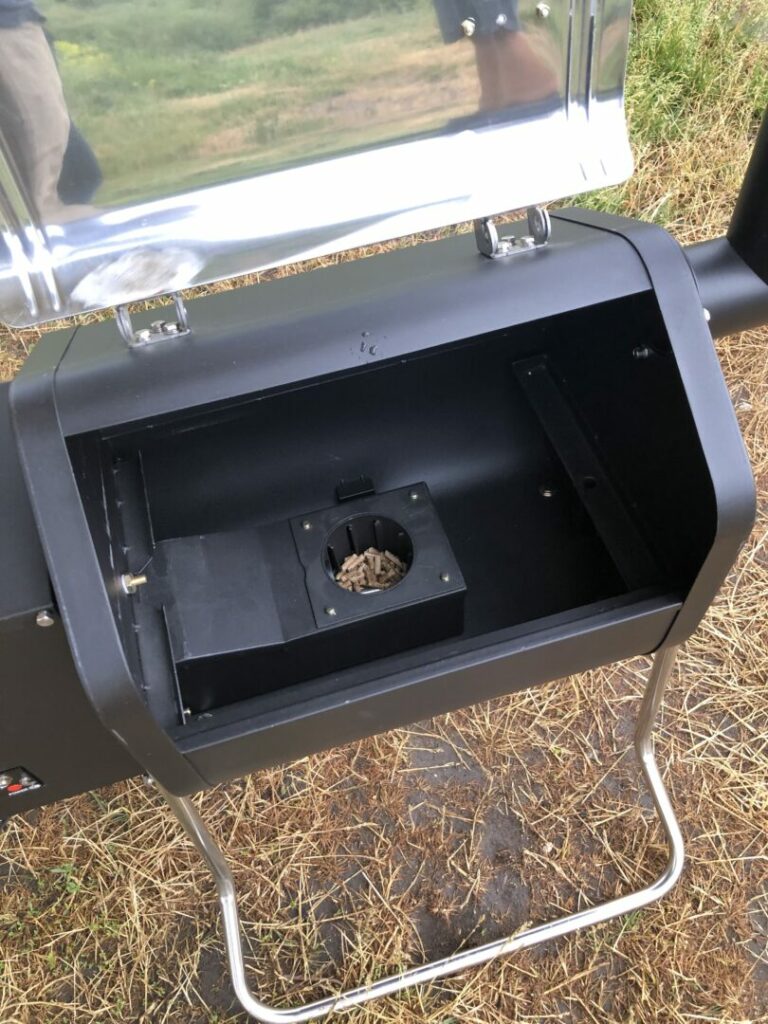
Traeger Ranger
- Digital Arc Controller for Precise Cooking – The Traeger Ranger portable pellet grill features a Digital Arc...
- Advanced Grilling Logic Ensures Consistent Heat – Enjoy perfectly cooked meals every time with the Advanced Grilling...
The Ranger is Traeger’s top portable smoker. While its footprint is similar to the GMG Davy Crockett, the pellet hopper takes up some of that internal space, so the grill itself is only large enough for one tri-tip, a chicken, or a rack of ribs cut in half.
The Ranger is more lightweight than the Davy Crockett, though if mobility is an issue. The Ranger’s digital controller supports 5-degree increments, which is better control than their smaller Scout model. The Ranger also boasts a cast iron griddle surface, which is a nice touch for camp cooking.
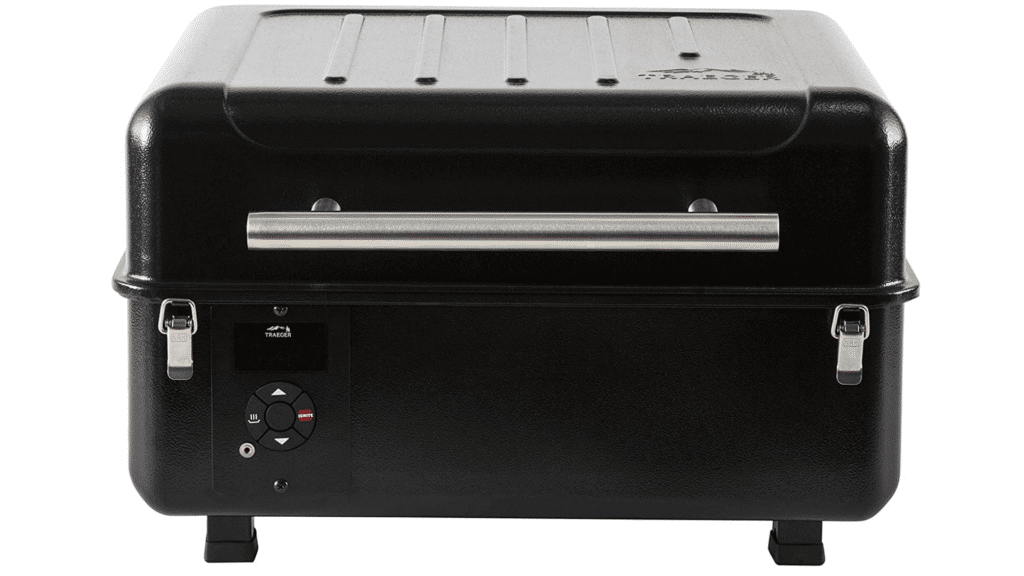
Traeger Scout
Although the price is comparable to the GMG Davy Crockett, the Scout is the most lightweight and smallest of the three portable smokers. The smaller grill surface of the Scout is more suited to burgers and dogs, but you could probably fit a modest rack of baby backs cut in half or smaller tri-tip. Despite the smaller size, the Scout is one of the original portable pellet grills and has a good track record.
The other variable in your decision is the pellet flavors. Luckily, you can experiment with this since all of these grills use the same types of pellets. Although the pellets are all named after tree varieties, most pellets tend to be compressed alderwood sawdust with flavoring and tree varieties mixed in. The blends are good enough to impart the flavor from their trees, and there is a remarkable variety in flavors. More robust flavored meats like ribs and briskets do well with the intense pellet flavors, like mesquite and oak, while more delicate meats like chicken and fish do better with the fruit woods, like apple and cherry. Many cooks eventually land on a preference of one wood flavor and stick with that one, while others like to vary their pellets for different meats.
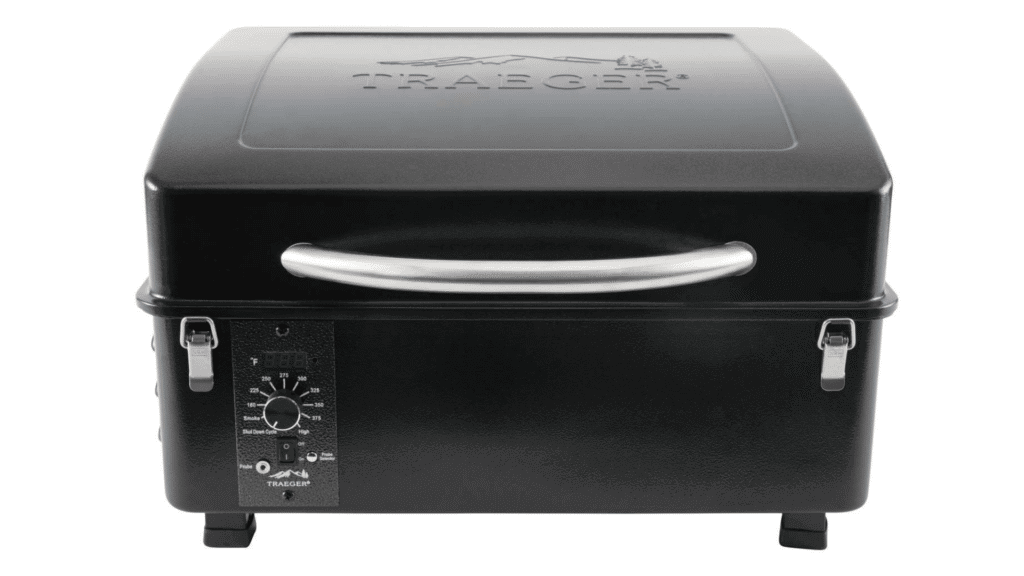
Our Pick as the Best RV Portable Smoker
If you love a good barbecue and want to take your great cooking on the road with you, the Davy Crockett by Green Mountain Grills is by far the best RV portable smoker. The features, size, and versatility give you the most bang for your buck. Be prepared for some attention and envy when your fellow campers smell what’s cooking in your camp.
Last update on 2025-01-19 / Affiliate links / Images from Amazon Product Advertising API




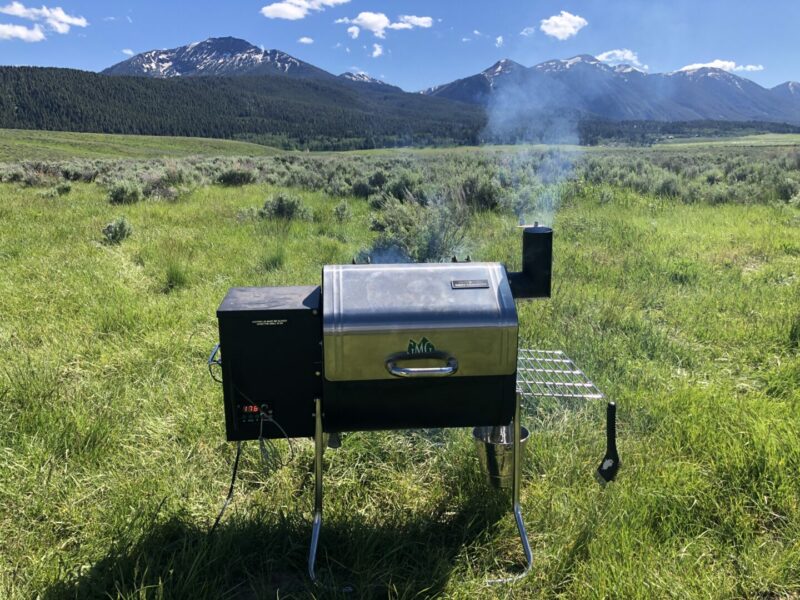

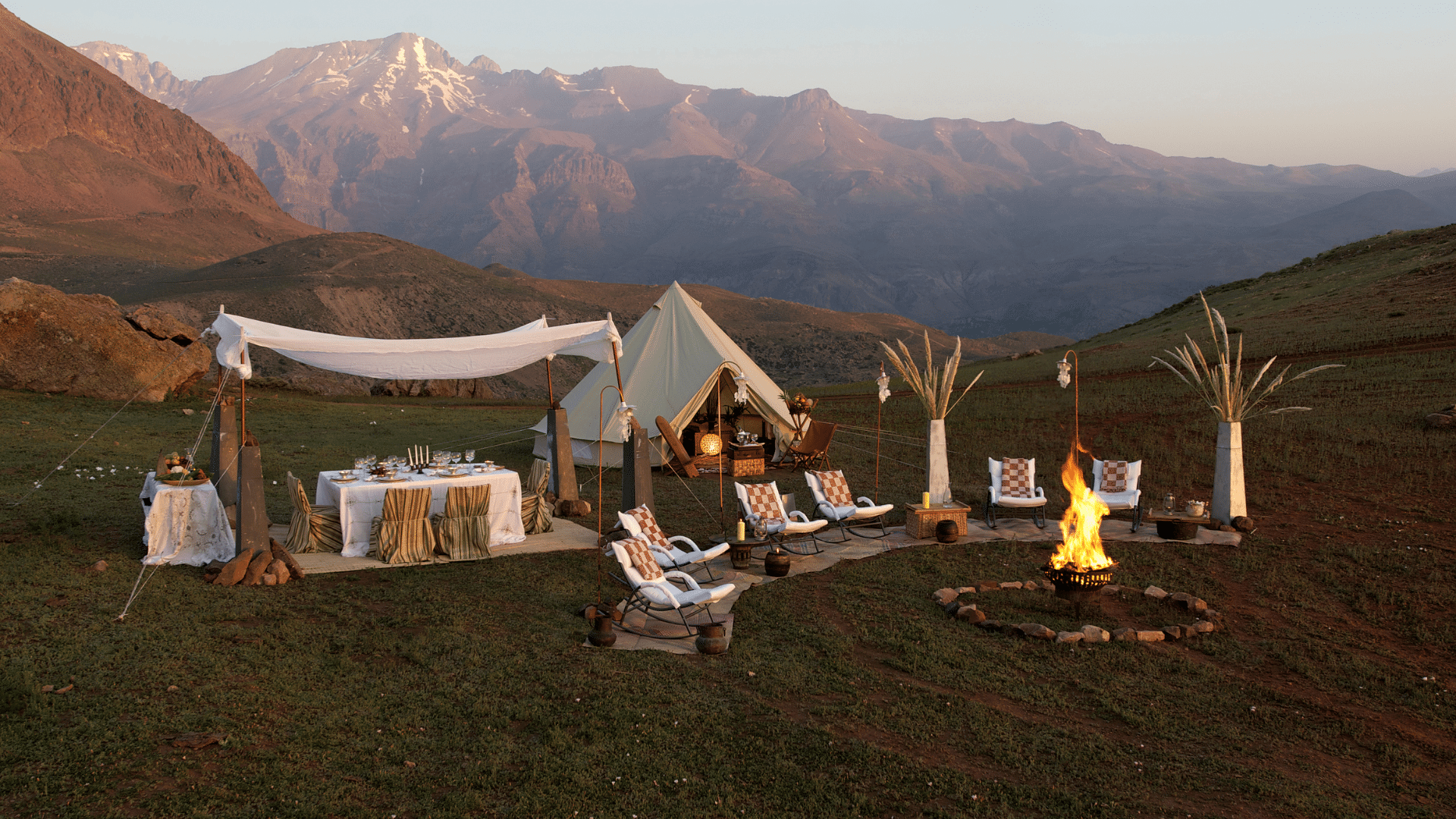

With a Smoker, let’s have fun with a Flat Top Grill also.
Woo Hoo!
Here is a very simple recipe for Smoked Pastrami (For the best Reuben you’ve ever had.)
I skip the week long brining process for brisket and I buy a supermarket corned beef. All you need to do is rinse and then soak the cornbeef in water for about 2 hours per pound and changing the water every 2 hours. Keep it refrigerated while soaking. You do this to pull out all the extra salt. Don’t worry there will still be plenty of salt in the meat when you finish the soak. Then rub on some mustard and a sprinkle on the following rub mix:
1/4 cup Sam’s coarse ground pepper
1/4 cup Ground coriander
(If you want you can always grind your own pepper and coriander)
Smoke at 250 until you reach 200 to 205 internal. Use your favorite wood to smoke. I like apple. 🙂 Once the bark is set (won’t rub off around 150F internal) you can wrap in foil. Wrap tight so that it doesn’t steam the meat and loosen the bark. I usually do a double wrap of foil. Put back on and continue cooking until internal is 200 to 205F
Slice slightly less than pencil thick. Don’t worry it won’t be to thick because it will melt in your mouth.
Let me know how it goes.
Ken Fehner
We have a Traeger tailgater. It can be used on our tailgate, picnic table or it has legs that can drop down and be used as a stand alone. We cook nearly everything on our Traeger. Lobster, shrimp, burgers, steaks, chicken, pork fish, potatoes, bacon, Mac n Cheese, pizza, lasagna, bacon, eggs. I use it as an oven, all vegetables etc. I bake pies, cakes desserts. I can’t say enough a out how much we love our tailgater. Son-in-law bought a green mountain and used it once. sold it next day and bought a tailgater.